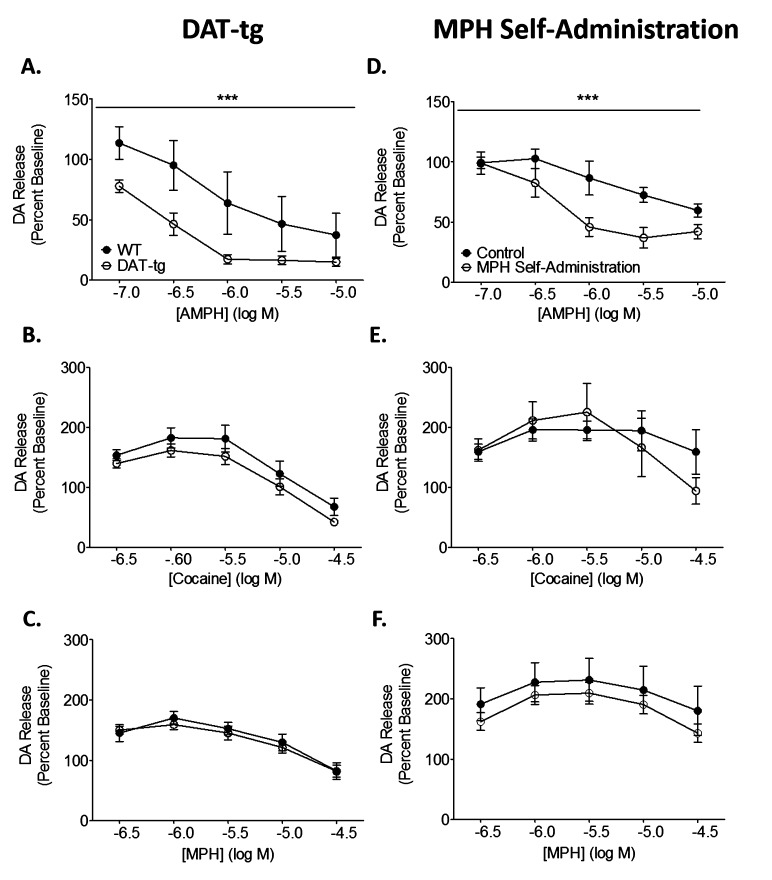Figure 4.
Methylphenidate (MPH) has the release profile of a blocker. Full concentration–response curves for MPH (MPH, n = 11; DAT-tg, n = 10), amphetamine (AMPH; MPH, n = 9; DAT-tg, n = 9), and cocaine (MPH, n = 9; DAT-tg, n = 9) were run in DAT overexpressing mice (DAT-tg; left) and following MPH self-administration (right). (A) AMPH, a prototypical dopamine releaser, attenuated evoked release to a greater extent in DAT-tg mice. (B) Cocaine, a prototypical DAT blocker, resulted in an inverted “U” shape release curve. Release was not different between wild type and DAT-tg mice. (C) Evoked release in the presence of MPH was unchanged between groups, and also resulted in an inverted “U” shaped curve. (D) Following MPH self-administration, AMPH-induced reductions in release were exacerbated. (E) Evoked dopamine release in the presence of cocaine was unchanged between MPH self-administration and control groups. (F) The release profile of MPH was unchanged following MPH self-administration. ***p < 0.001.

